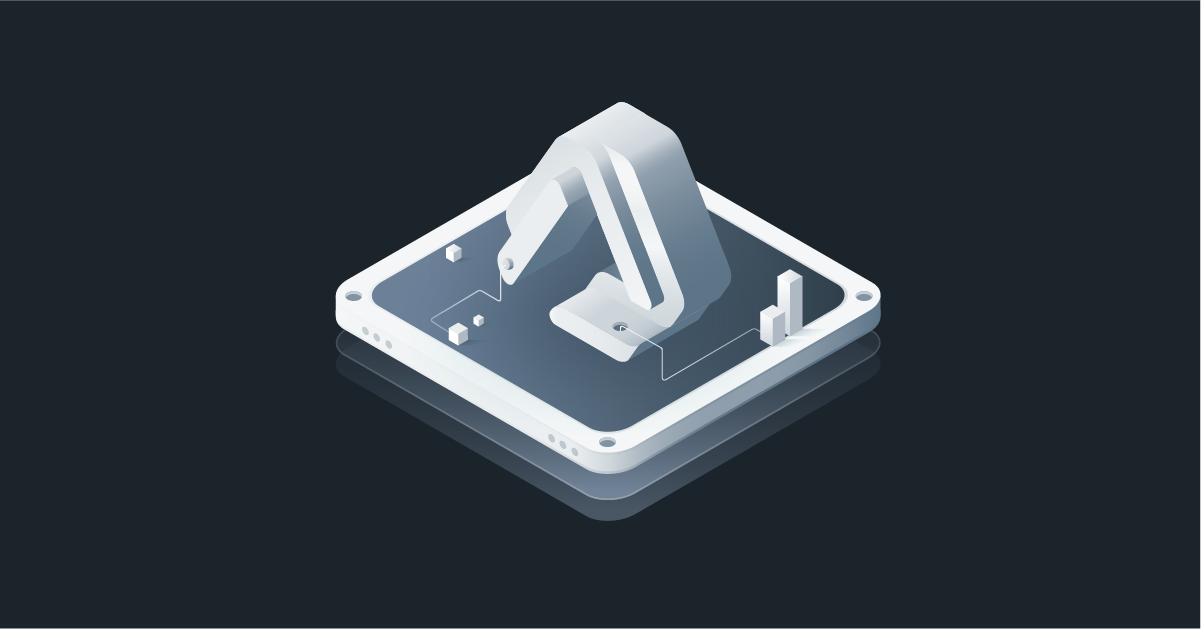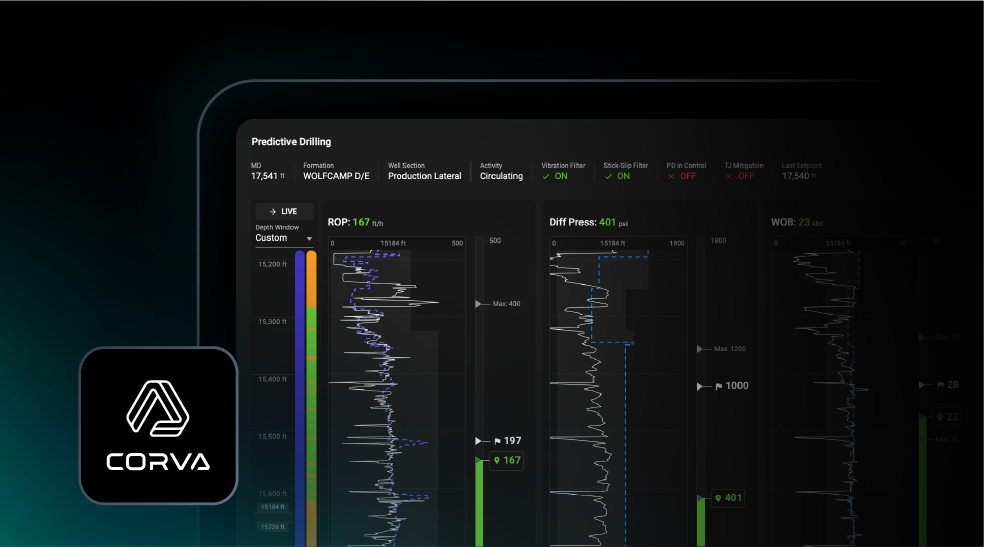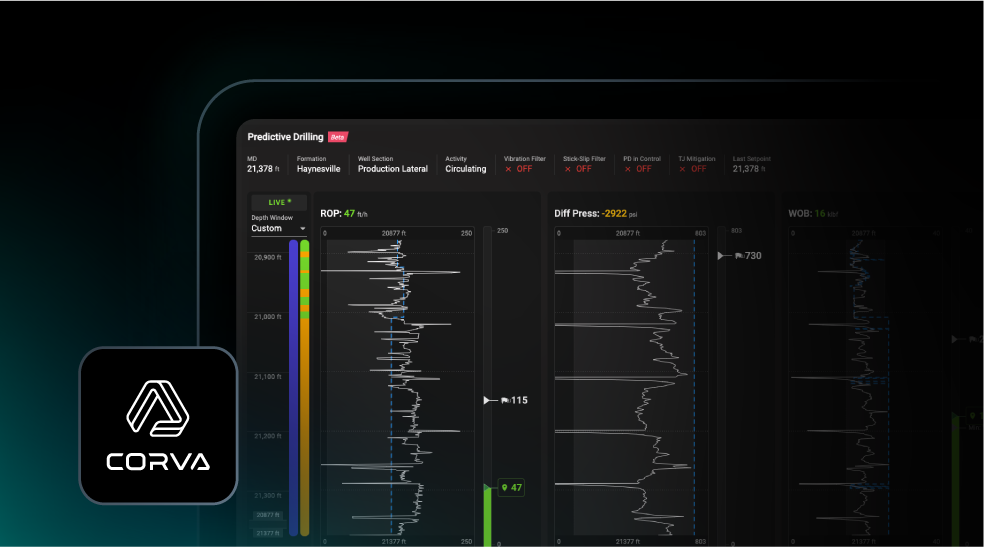Gearing up to drill? That’s a tough question to answer heading into the new year as oil prices remain uncertain. Given the shifting economics, many producers are taking a second look at drilling programs and the ROI of new wells. Maintaining drilling momentum in 2019 is all about optimizing field spending and Corva is perfectly poised to help drillers do just that.
From optimizing performance across the rig to getting the most mileage out of equipment, here are 5 ways to save millions this year along with real-world examples of how Corva’s clients are saving big.
#1 Reduce Connection Times
Like a NASCAR pit crew changing a tire, making up a stand of drill pipe requires meticulous timing and execution by rig crews. Knowing where to improve starts with a clear view of connection times across the board. That’s where Corva’s Connection Times app comes into play. On bottom to slips, slips to slips, slips to on bottom, and weight to weight – this app enables crews to easily spot areas to improve and trim times.
Actual Client Results: $17,300 saved per well by cutting connection time by 2 minutes (208 connections, $60k daily rig cost)
#2 Increase Rotary ROP
Because drillers spend most of their time on rotary drilling, a boost to rotary ROP by even a few percentage points can significantly cut project cycle time and costs. Attaining optimal ROP these days is data-driven, requiring constant analysis of rig and offset well data, underscoring the need to process and visualize drilling parameters in real-time. Corva’s suite of apps delivers this real-time analysis with tools like ROP and MSE heatmaps, which recommend optimal weight on bit and RPM parameters. And with our Driller’s Roadmap, drillers can harness offset well data to find the best practices and parameters that yielded best-in-class performance through each formation.
Actual Client Results: $30,000 saved per well by boosting ROP by 13% (12 hours of rig time saved, $60k daily rig cost)
#3 Decrease Slide %
Directional drilling intervals can reduce overall ROP by half and adds tortuosity to the wellbore, so it is critical to minimize sliding in order to reduce rig costs and wear on equipment. Corva has several powerful apps designed to minimize sliding and improve directional drilling accuracy, including our Toolface vs MD and Rotary Trend analysis apps. Together, these tools enable directional drillers to monitor toolface consistency and slide effectiveness while reducing slide percentage and increasing rotary ROP.
Actual Client Results: $64,800 saved per well by reducing sliding by 13%/ (-1.08 days of rig time, $60k daily rig cost)
#4 Pick the Optimal BHA
Ensuring neutral tendency and minimizing dysfunction requires careful analysis of historical BHA runs as well as selection and optimal configuration of downhole tools, including bit, mud motor, stabilizers, and logging equipment. It’s a time-consuming process that must be performed for multiple BHAs per well. Corva’s BHA Optimization app helps engineers select the ideal BHA components, paired with the optimal WOB, RPM, and other drilling parameters. Leveraging hundreds of historical BHA runs and offset well data, this app enables drillers to pick the perfect BHA for the job and subsurface conditions. The result? The BHA selection process is cut from weeks to minutes. And by using the best-in-class string of tools every time, BHA runs are longer while boosting ROP and reducing slide %.
Actual Client Results: 72 hours saved per year for each Drilling Engineer
#5 Avoid Train Wrecks
Washouts, twist offs, fishing jobs, and other catastrophic events are the bane of drillers. In addition to the high cost associated with damaged equipment and remediation, these train wrecks have a cascading impact on drilling schedules, adding NPT and idle rigs to the cost. Corva helps drillers anticipate and avoid hazardous conditions with our Torque & Drag, Hydraulics Dashboard, and Predicted vs. Actual Divergence apps. Plus, drillers can monitor by exception using custom alerts that leverage state-of-the-art algorithms to provide early warning of washout pressure conditions or alert drillers when nearing formation top to prevent bit damage.
Actual Client Results: $200,000 estimated savings by preventing 3 surface and 6 downhole washouts (Over 2-month period and multiple wells)
Adding Up the Savings
In the real-world examples above, we’re only taking into account the results of a few wells. Even so, the results are impressive with a combined savings of more than $300,000. But factor in continuous improvement over many wells and the cost savings accrue, potentially knocking $1M off the cost of a multi-well pad. And for factory drillers with hundreds of sites in their inventory, it’s a multi-million-dollar savings that can fuel a new wave of drilling regardless of the pricing environment.



